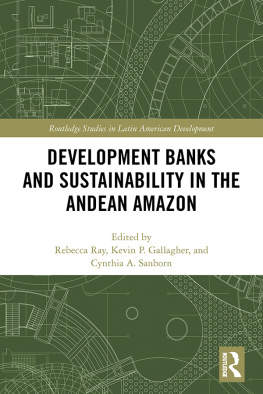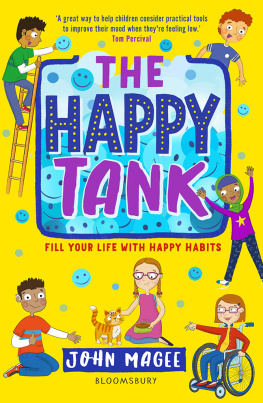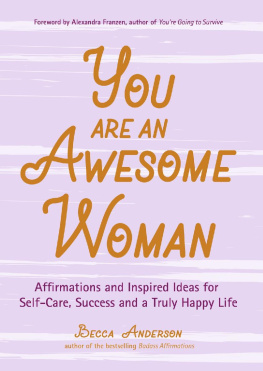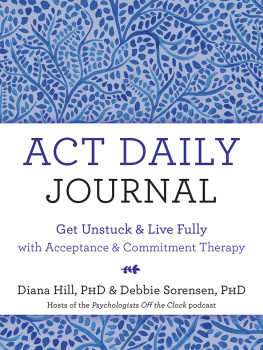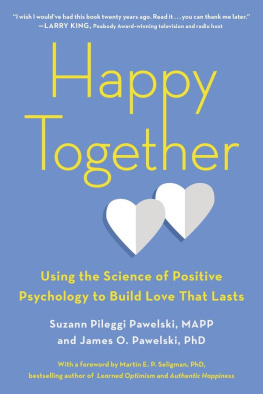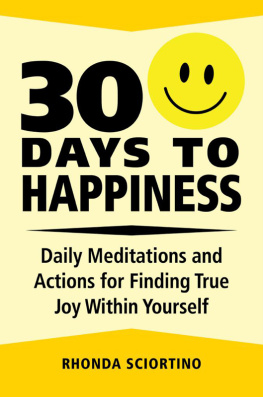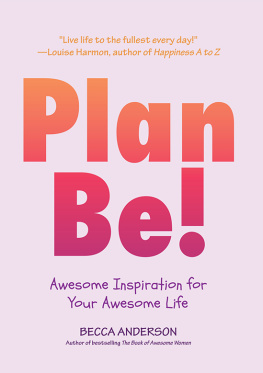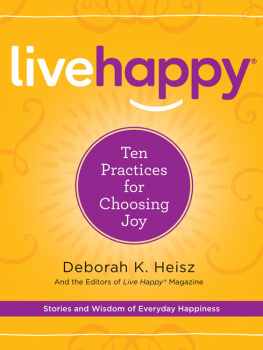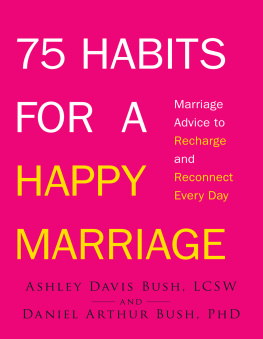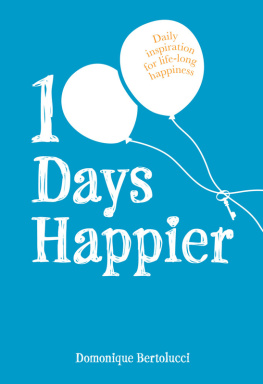
INTRODUCTION
T his book is in your hands for a reason. Maybe its because you refuse to settle for a mediocre form of happiness. Maybe you are thirsty for techniques that can boost your daily well-being. Maybe you could do with a moment to yourself to work on your quality of life, rather than caring for someone else all the time. Or maybe you received this book from someone who cares about you.
However it ended up in your possession, this book invites you into the global conversation on happiness and how we can create more of it. Here, Ive collected all of the strategies that Ive found most effective for boosting your sense of happiness and well-being. These strategies are based on a combination of the science behind happiness and my clinical experience in walking alongside clients on their journeys to becoming happier people. Now, its your turn. Come walk with us.
HOW TO USE THIS BOOK
Y ouve probably already figured out that this book is about fostering habits for happiness. But before we move on, I want to clarify what I mean by happiness, just to make sure were speaking the same language.
Happiness itself is an emotional state, and as emotional states go, its fickle and impermanent, especially when you want it most. In Be Happy, Im talking about the broader concept of well-being, the one that includes all the ingredients we need to feel an overall sense of happiness.
I like to use Martin Seligmans theory of flourishing, which includes the following components:
A) Positive emotions;
B) Activities that provide a sense of engagement (or flow);
C) Healthy relationships;
D) A sense of meaning and purpose; and
E) A sense of accomplishment.
From this list alone, you can see that its not as simple as just becoming happy and then holding onto that pleasant emotional state with a white-knuckled grip.
The good news is that you have a great deal of control over these happiness ingredients, and in this book, Ill appeal to your inner control freak and show you just how to take your ability to thrive into your own hands. But before I lull you into a false sense of security, we should talk about the aspects of your own happiness that are not within your control.
S onja Lyubomirskys happiness pie chart divides the contributing factors to happiness into pieces. First, you cant control your genetics. Thanks to the magic of your conception and birth (it does happen by magic, doesnt it?), you have a predetermined set point for happiness. The combination of your personality and your genetic makeup account for 50 percent of your happiness. Second (and heres the kicker), the things we think will contribute to our happiness dont actually do much for our overall well-being. The vacation house with the private beach, the sports car youve always dreamed of owningthese things contribute to a measly 10 percent of your happiness. On top of that, any new possession or positive change in your circumstances (e.g., a pay raise) only changes happiness in the short term because of how adaptive we are as human beings. You can win the lotto and, thanks to a process called hedonic adaptation, end up just as happy (or unhappy) as you were before your bank account swelled, because you adapted to your new circumstances.
The good news is that the final piece of the happiness pie is large and controllable. Thats right: you control at least 40 percent of your own happiness through your own choices and actions. This book will show you exactly which actions are going to shift you from simply surviving to all-out thriving.
Heres the thing: Ive always been a fan of fastnot necessarily in the quick-fix kind of way, but in a this-fits-easily-into-my-day kind of way. And thats exactly what this book aims to do: provide you with a set of tools that you can access on your own terms, in your own time.
Read this book from cover to cover, or open this book to the section you need, depending on what youre facing todayits up to you. The book is divided into four sections: Choosing, Cultivating, Practicing, and Making Space For, with each of these sections diving into areas of our personal power. We have power in:
CHOOSING emotional states and values that help us to live full lives based on whats important to us deep down.
CULTIVATING habits and routines that provide the architecture for a life of flourishing.
PRACTICING (over and over again) methods that create a well-being mindset.
MAKING SPACE FOR life when it gets hard, so you can face the many ways life trips you up without getting stuck.
At the end of each chapter, youll find a sidebar titled Make A Habit of This is where we put these lessons to work and look at ways we can cement positivity into our everyday lives. After taking time to look inward while reading these chapters and identifying which parts of your life youd like to change, use these closing sections to focus your energy toward making an actual difference.
Congratulations on acknowledging that you can get more out of life. The habits to come will show you how. Lets go!
H appiness is a transient emotional stateit can be hard to find, and harder still to hold onto for long. Some days, it may disappear for no good reason at all and leave you scrambling for other emotions to fill its place. Luckily, thriving is a psychological state that doesnt just rely on positive feelings like happiness, but on the daily choices we make. Want to live a rich, vital, fulfilling life? Choose your focus. Choose your actions.
While reading this first chapter, take some time to reflect on the choices you are currently making versus the choices described here. Sometimes our choices are unconscious, and its not until we are presented with alternatives that we realize weve been sabotaging ourselves all along.
So, lets talk about the daily choices that determine (a) the emotional states we want to embody, and (b) the personal values we can connect with along the way.
CHOOSING joy
Find out where joy resides, and give it a voice far beyond singing. For to miss the joy is to miss all.
ROBERT LOUIS STEVENSON
W e are blessed with the capacity to feel all the colors of the emotional rainbow, but too often we miss the brightest one. Joy, like all strong feelings, brings us closer to our true selves.
Before you worry that Im going to sermonize about just being positive, I promise you I am not, would not, will never. I know its not that simple, and so do you. Our brains are problem-solving machines, designed to identify threats and keep us safe. They are not designed to revel in the bounty of tiny happy things that make the world beautiful. Its easy for the small joys to slip out of our grasp quickly, or pass by unnoticed altogether.
Our innate brain wiring is why were unable to focus on positive things all the time. But we dont have to remain fixed in a negative emotional state because of that. We can deepen our experience of joy by focusing on the things that bring delight into our lives when they occur. A cool breeze on warm skin. An unexpected phone call from your best friend. A warm interaction with a stranger on the train. It doesnt matter what the situation is, and it doesnt matter what brand of joy it isdelight, elation, contentment, bliss, gladness. What matters is that we stop to notice it, embrace it, and celebrate it.
Next page

